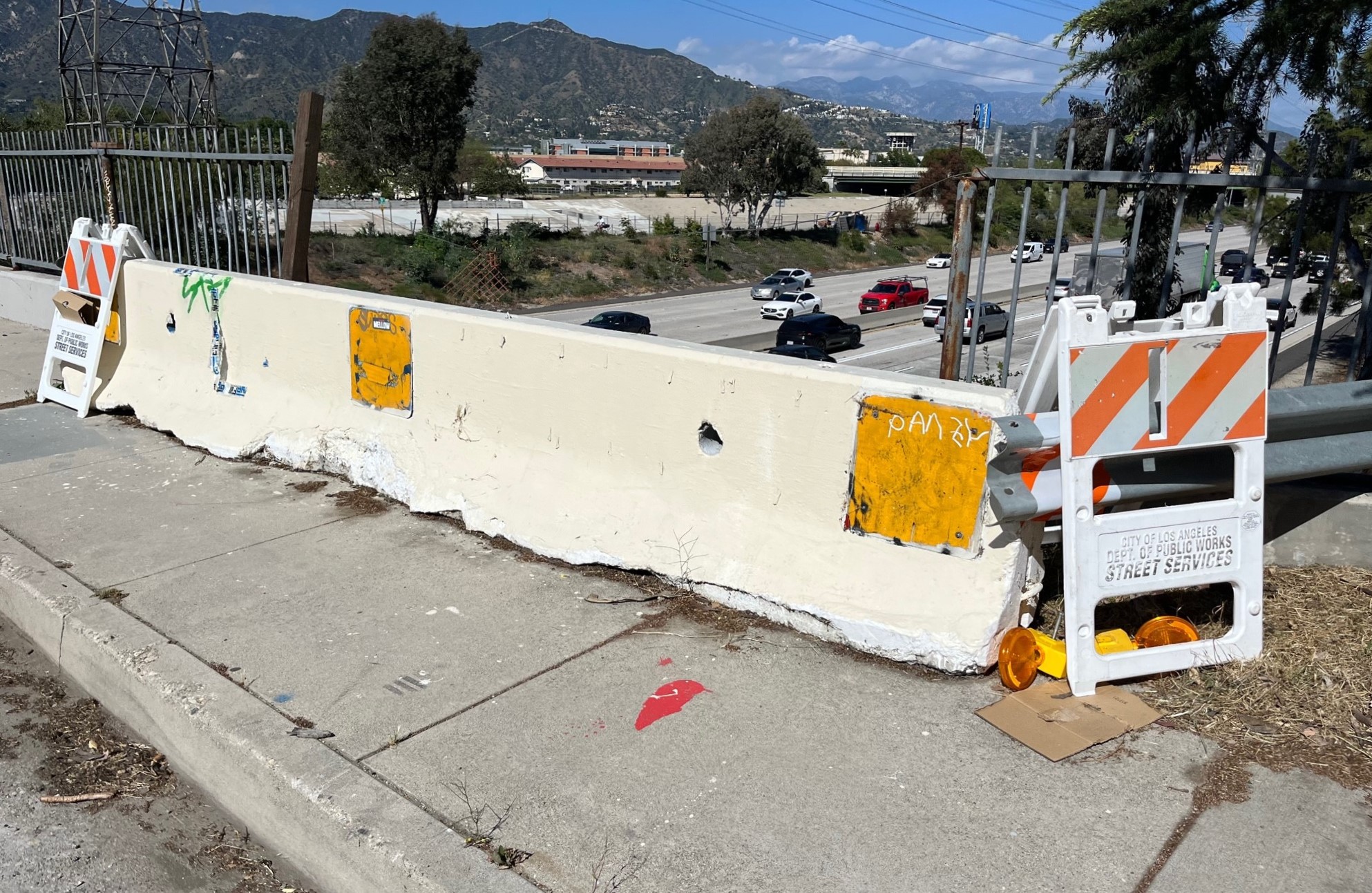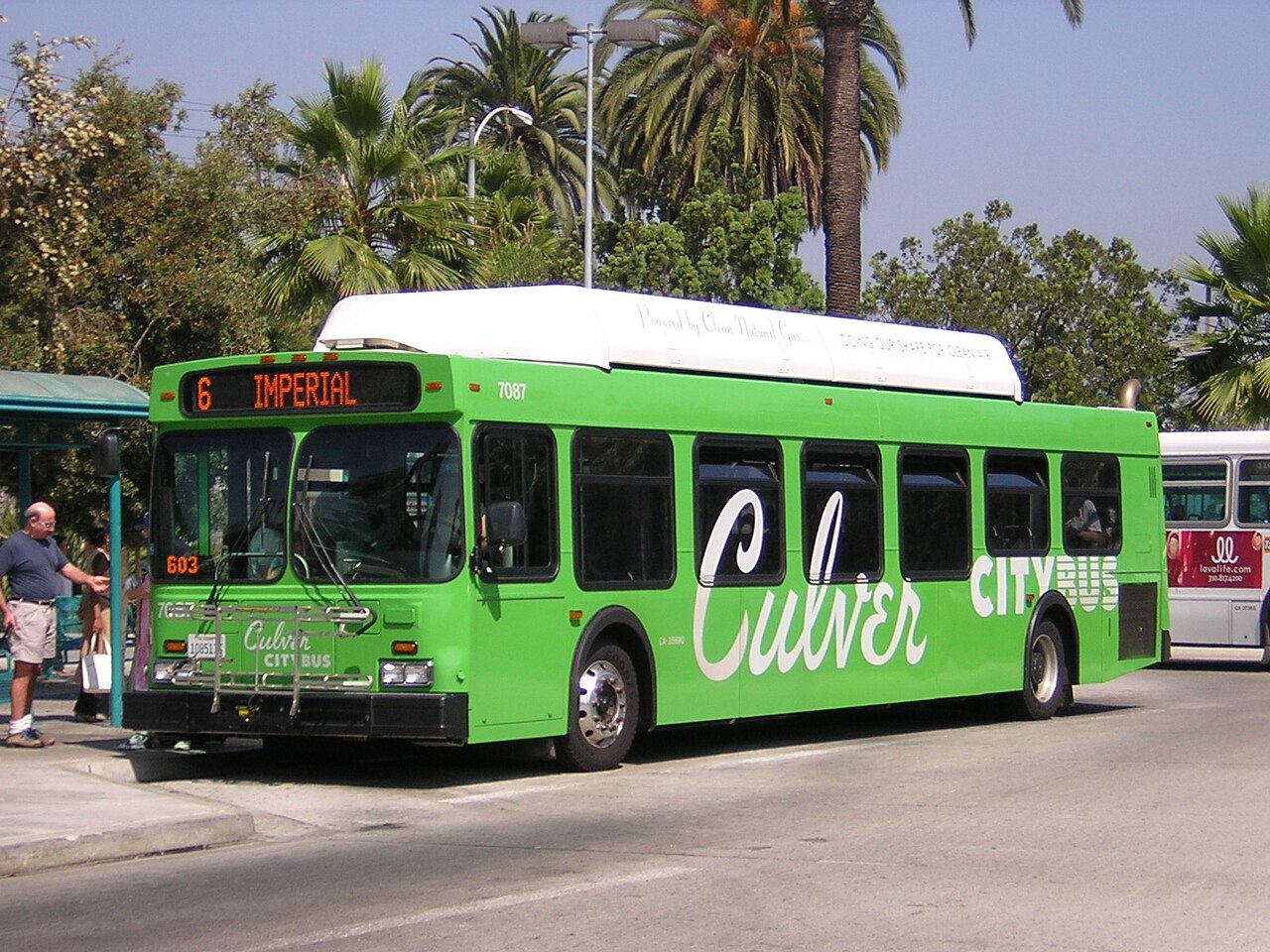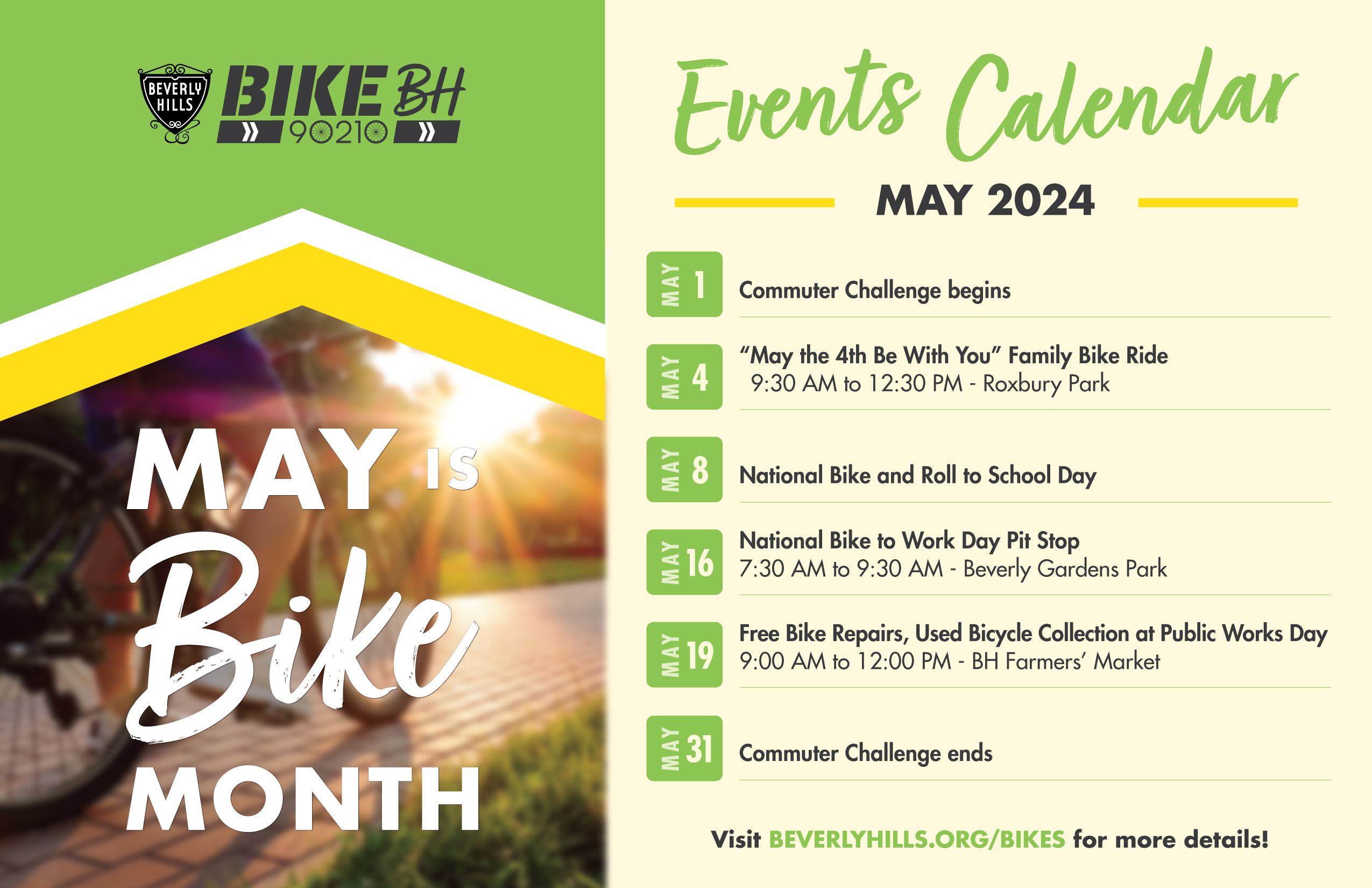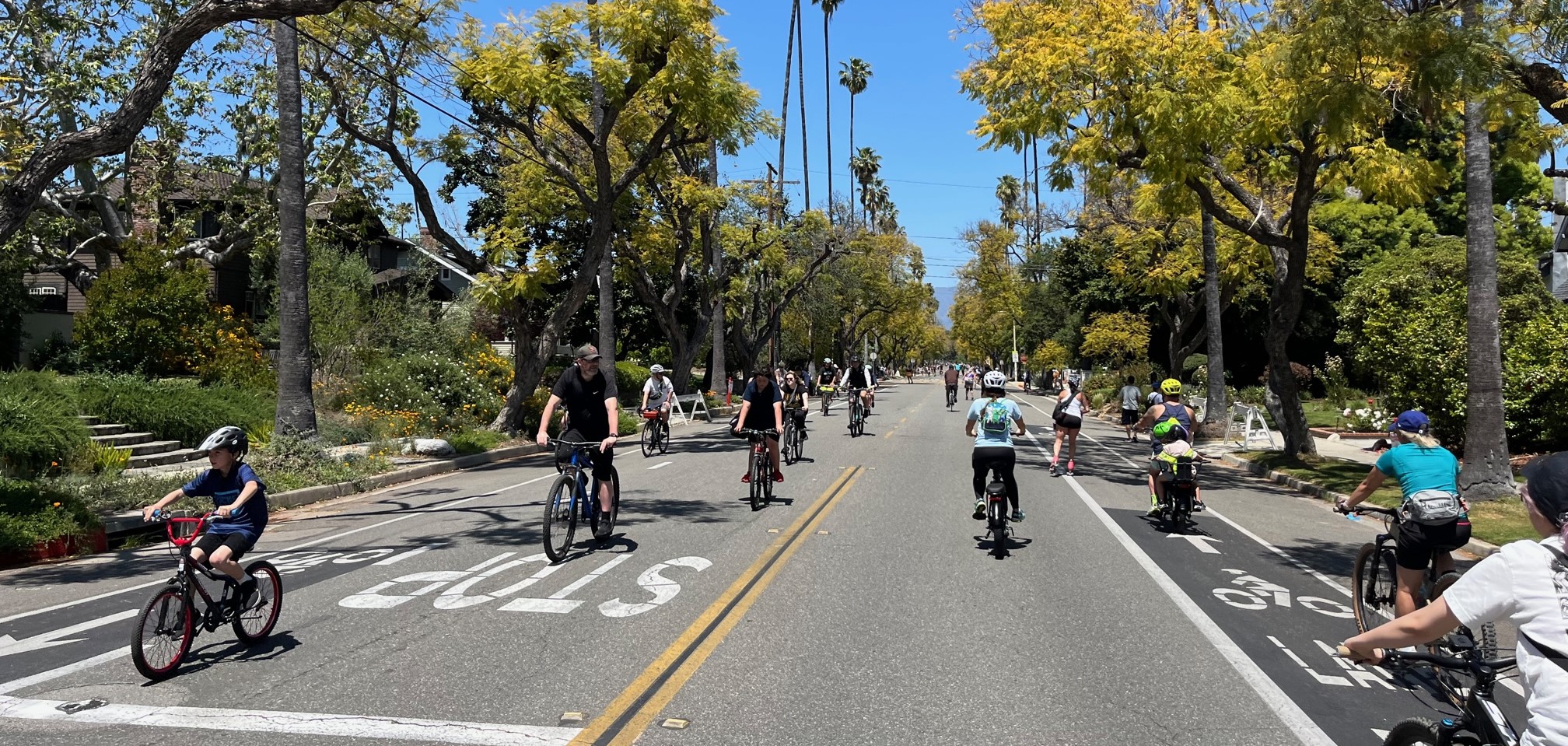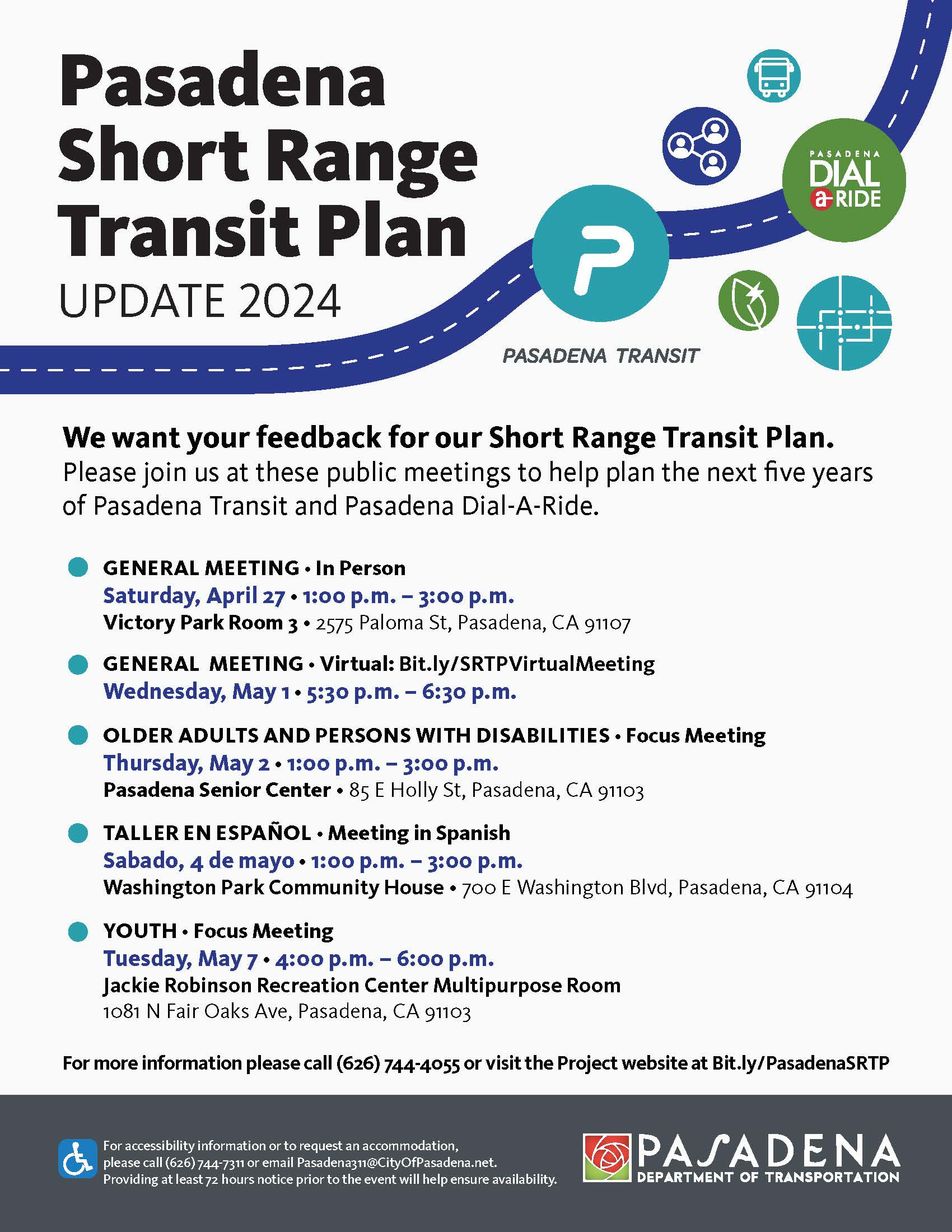Caltrans: Complete Streets Are Coming, But Not With Much Urgency
12:56 PM PST on January 28, 2022
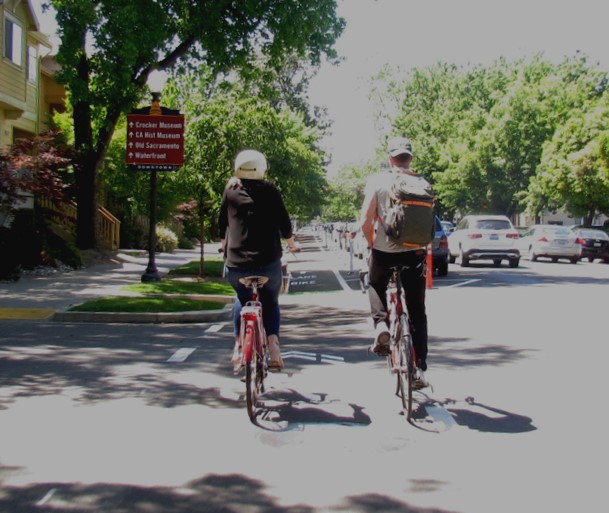
A complete street in Sacramento. Photo by Melanie Curry/Streetsblog
Note: GJEL Accident Attorneys regularly sponsors coverage on Streetsblog San Francisco and Streetsblog California. Unless noted in the story, GJEL Accident Attorneys is not consulted for the content or editorial direction of the sponsored content.
This week's meeting of the California Transportation Commission featured several discussions about how - and when - Caltrans will incorporate climate and complete streets goals into its projects in accordance with recent state policy directives and guidance including the Climate Action Plan for Transportation Infrastructure (CAPTI), a new policy directive on Complete Streets, and Caltrans equity policies.
To sum up: The "how" is a work in progress, and the "when" is not very soon.
"There's an existing pipeline of [highway] projects in various stages that are too far along to be able to do a complete 180 and focus on the [department's] new direction," said Caltrans Director Toks Omishakin in response to a question from Commissioner Joseph Lyou.
Eventually, some day, "I'm not sure when we will get to that point," state highway projects will be more focused on climate, equity, and complete streets, he said.
Commissioner Lyou had pointed out that "research has demonstrated that highway expansion has not solved congestion, and we cannot continue expanding highways and expect different results. When addressing congestion, we need to consider alternatives - like multimodal operations, pricing, and traffic management systems. Yet every time [the CTC meets] I discover at least one new highway capacity expansion project that I wasn't aware of," he said.
Lyou seemed somewhat satisfied with Omishakin's response, having heard the Director say that Caltrans was "looking at projects in the pipeline and what might be able to be done" to bring more of them in alignment with the California CAPTI and other state and department goals.
Complete Streets
At another point in the meeting, Executive Director Mitch Weiss asked Tony Dang, Caltrans Deputy Director for Sustainability, which Caltrans projects would be covered by the new Complete Streets requirement. "If something is programmed for construction allocation next year, say, is it your expectation that they go back and look at adding complete streets elements, even if they're almost ready for construction?" he asked.
No, said Dang, "we just want all projects starting with the 2022 State Highway Operations and Protection Program (SHOPP) to go through that process." Weiss, pointing out that two years ago the department had been able to add and fund complete streets elements to already-approved SHOPP projects, urged Caltrans to "be more aggressive" about finding opportunities to push this.
But Commissioner Bob Alvarado was wary. "We want to make sure we are looking forward enough, and that we're not going to get a bunch of redesigns coming through," he said. "We don't want to stop projects."
On the second day of the meeting, commissioners heard several appeals from a already approved highway and transit projects in the SHOPP and other programs for more money - sometimes a lot more money - for a variety of reasons, including higher-than-expected bids, supply chain issues, and delays due to fires, a rockslide, and the pandemic.
State Highway Operations and Protection Plan (SHOPP)
A presentation on the 2022 SHOPP list began with a long digression on why the timeline of projects seems to extend into infinity. Each year, a list of projects is presented to the CTC for funding approval. The current list is scheduled to be approved in March, with ongoing opportunities to submit public comment until then, including at least one public workshop in February and another in March.
The annual SHOPP list cover four years' worth of projects. They are taken from the "SHOPP ten-year project book," which in turn come from needs identified in the California Transportation Asset Management Plan and the State Highway System Management plan.
Note: this is why it is so important that Caltrans has begun to include pedestrian "assets" such as crosswalks and sidewalks in its Asset Management Plan - if they're not on the list, they don't get either funding or attention.
According to Caltrans staffer Mike Johnson, over time the number of complete streets elements in the SHOPP has been increasing - the department calculates that 46 percent of the 2022 SHOPP projects have some complete street element. That includes 50,000 crosswalks, 224 feet of sidewalks, 121 transit improvements, 167 bus bulb-outs.
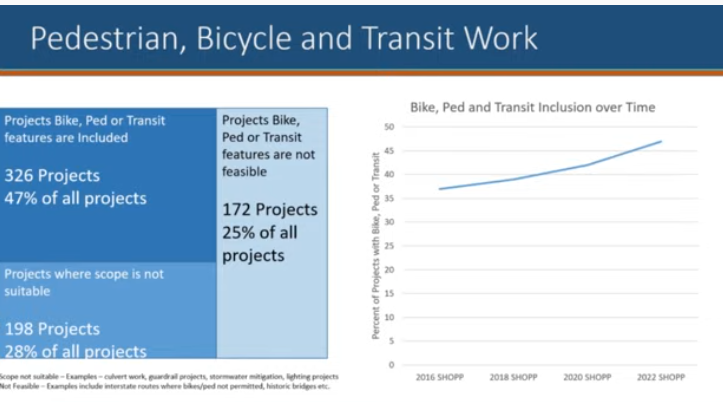
But advocates have had difficulty checking these calculations, for two reasons: combing through the sprawling SHOPP documentation is a monumental slog through vague and incomplete information, and the definition of what counts as a "complete street" element is not clearly defined. Does a highway bridge that slaps down a sharrow, even though prevailing traffic speeds are 40 mph, get full credit for including a "complete streets element"?
"A complete streets feature doesn't make a complete street," Jonathan Matz of the Safe Routes Partnership told the CTC. "We're happy to see there is more bike and ped infrastructure being incorporated, but we're still a long way from telling whether the new policy is transforming projects."
"There's currently very little access to the planning documents that went into the SHOPP list," said Matz. Greater transparency "would help the public understand or gauge to what extent policies are having an impact on the list, and which elements are included in the projects."
Carter Rubin of the Natural Resources Defense Council also asked for more clarity. "We'd appreciate the chance to dig in on those numbers and understand which projects are contributing to that, and how much funding is going towards complete streets versus some of the other capital funding," he said. The project book website "has helped us understand, although in some cases it's hard to verify some of the complete streets elements," he said.
David Azevedo, of AARP California, also expressed appreciation "about this next iteration of the SHOPP program," which seems to be in alignment with California's 2017 Master Plan for Aging.
That plan "confirms the need for policies that support aging, especially for transportation beyond cars," said Azevedo. "We are glad to see Caltrans highlight SHOPP projects that have complete streets elements, but we're looking for better transparency for the public to understand exactly what that means."
Matz suggested that the SHOPP guidelines, which are in the process of being updated, would be a good place for the department to define what it means by "complete streets elements."
Other Matters of Note
On Wednesday, the commission elected a new chair, Lee Ann Eager, and a new vice chair, Carl Guardino. The terms of current commissioners Bob Alvarado and Fran Inman are coming to a close in February; Alvarado has told the commission he would not seek re-appointment.
Guidelines for the Active Transportation Program are currently in the process of being updated. (Upcoming workshops will take place on February 2, 8 and 23, and on March 2; information available here.)
Commissioner Lyou said he wanted the guidelines to request more information about exposure to pollution for any bicycle or pedestrian facility planned within 500 feet of a heavily traveled road. It was a suggestion he had made several years ago, but was told it was too late to incorporate into the guidelines at that time. "I'm not trying to prevent any active transportation projects," he said. "I want - if there is discretion - to move projects away from freeways to reduce exposure."
He cited data that found that exposure to even small amounts of PM2.5, a common vehicle emission, greatly increased the chance that a person who contracted COVID would die from it. Moving a project even a little bit farther from a highway, when it is possible, could greatly improve the health of riders.
Commissioner Guardino reminded attendees that the governor's budget proposal includes a $500 million bump for the Active Transportation Program. The CTC "made a bold and, I think, appropriate request for $2 billion for the ATP," he said. "It's heartening to see half a billion proposed for additional active transportation funds, and I would encourage folks to communicate with their legislative representatives between now and the June 15 budget deadline" to encourage more funding.
Commissioner Alvarado floated another one of his bold ideas. Instead of pausing the scheduled increase in the state gas tax this summer, as proposed by Governor Newsom, he suggested using a similar amount of money (about $500 million) from the budget surplus to send a rebate to drivers equal to what they would have paid in increased taxes. That would make it clear to them just how small the amount is per individual - estimates of the average amount saved range from a couple of bucks to about $15 for the entire year. It could also be an opportunity for California to educate people about the importance of decreasing VMT, said Alvarado.
Stay in touch
Sign up for our free newsletter
More from Streetsblog Los Angeles
Freeway Drivers Keep Slamming into Bridge Railing in Griffith Park
Drivers keep smashing the Riverside Drive Bridge railing - plus a few other Griffith Park bike/walk updates
This Week In Livable Streets
Bike Month, Hyperion street safety, Eastside rail plans, Pasadena transit, CicloIRVINE, Culver City bus service, and more
Active Streets Mission-to-Mission – Open Thread
Tens of thousands of participants biked, walked, skated and scootered on car-free streets through San Gabriel, South Pasadena and Alhambra
